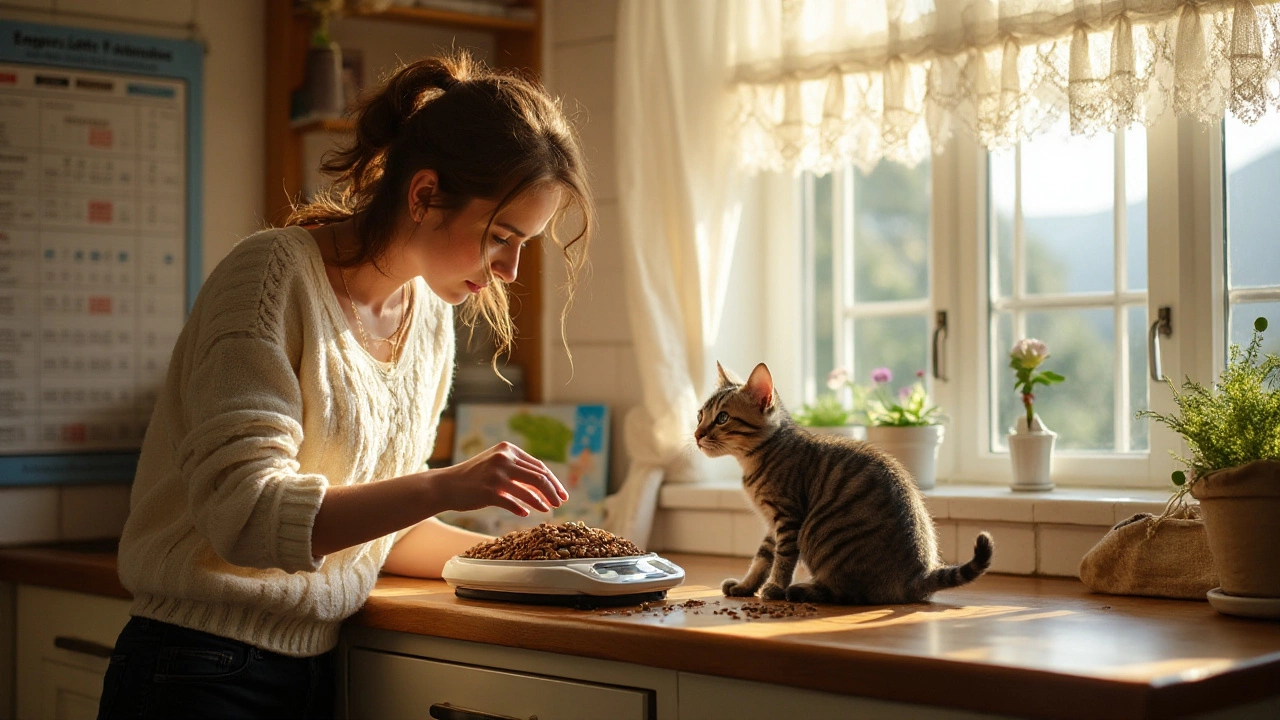Cat Feeding Basics: How Often, What to Serve & Easy Schedules
If you’ve ever stared at your cat’s empty bowl and wondered if you’re doing it right, you’re not alone. Feeding a cat isn’t rocket science, but there are a few simple rules that keep them thriving and your kitchen clean.
How Many Meals a Day?
Most adult cats do best with two meals a day – one in the morning and one in the evening. Splitting the calories helps keep their energy steady and prevents tummy upsets. Kittens, on the other hand, need three to four small meals because their growing bodies burn fuel fast. If your cat is a senior or has a health issue, talk to your vet – they might suggest more frequent, smaller portions.
Try to stick to the same times each day. Cats love routine; it reduces anxiety and stops them from begging at random hours. A good rule of thumb is to feed breakfast around 7‑8 am and dinner around 6‑7 pm. Adjust the clock if your schedule shifts, but keep the gap roughly the same.
Choosing the Right Food & Feeding Style
Dry kibble is convenient and cheap, but it’s low in moisture. Cats naturally get most of their water from food, so pair dry kibble with a bowl of fresh water or a little canned wet food. Wet food packs more protein and hydration, making it a solid choice for kidney‑friendly or overweight cats.
Free‑feeding (leaving dry food out all day) works for some cats, especially those who self‑regulate. However, many will overeat, gain weight, and hide uneaten food in corners. If you choose free‑feeding, monitor the bowl daily and weigh your cat weekly to catch any weight changes early.
Portion‑controlled feeding is the safest bet. Use the feeding guide on the bag as a starting point, then adjust based on your cat’s activity level and body condition. A handy trick: weigh the food each day with a kitchen scale. It takes seconds and removes guesswork.
Don’t forget treats. They’re fine in small amounts, but they add up fast. Treats should be no more than 10% of daily calories. Swap high‑calorie biscuits for a few pieces of cooked chicken breast for a healthier perk.
Finally, watch the bowl placement. Cats prefer a quiet spot away from the litter box and high‑traffic areas. A low‑noise corner near a window works well – they can watch birds while they eat.
By keeping meal times regular, picking a mix of wet and dry food, and measuring portions, you’ll give your cat the nutrition it needs without the hassle. Your feline will stay sleek, happy, and less likely to launch a midnight raid on the pantry.
Posted By Bryndle Redding On 24 Dec 2024 Comments (0)
How Often Should You Feed Your Cat: Best Practices and Tips
Deciding the right feeding schedule for a cat is crucial as it influences their health and happiness. This article explores ideal feeding frequencies depending on a cat's age, health, and lifestyle, with insights into portion size and meal timing. Understand the differences between feeding kittens and adult cats, and learn the importance of a balanced diet. Discover practical tips for managing feeding routines for both indoor and outdoor cats.
READ MORE